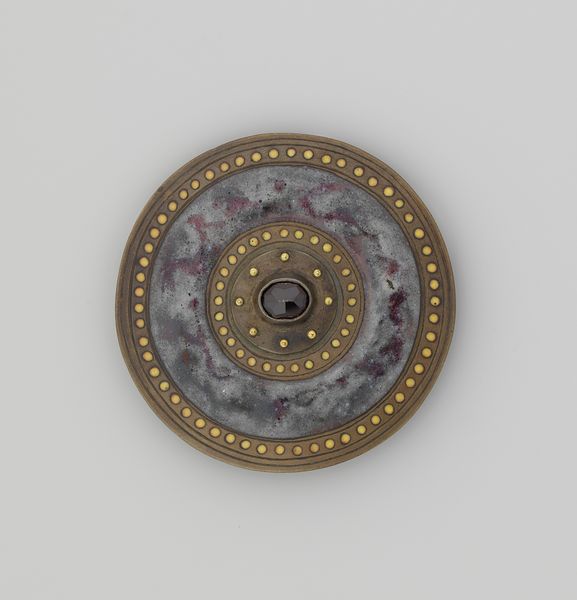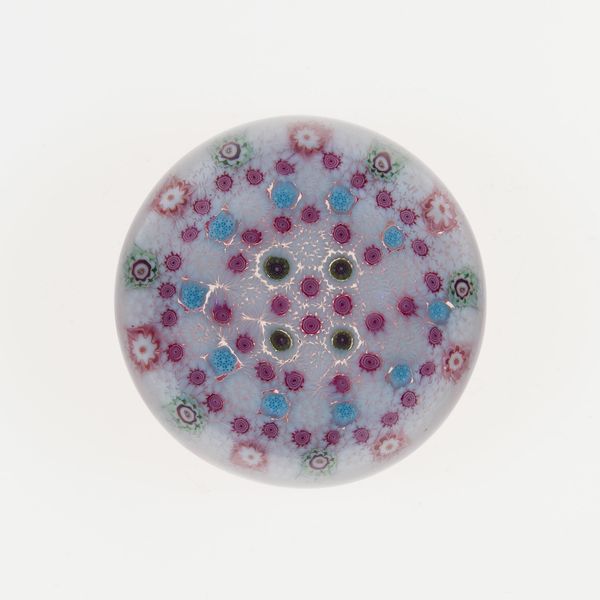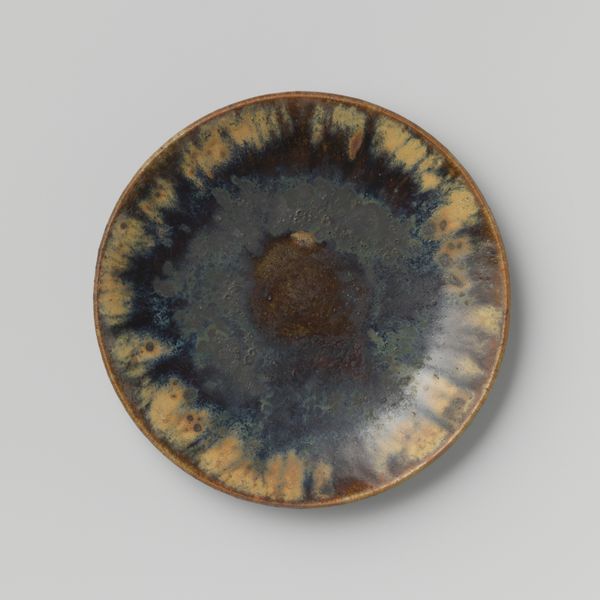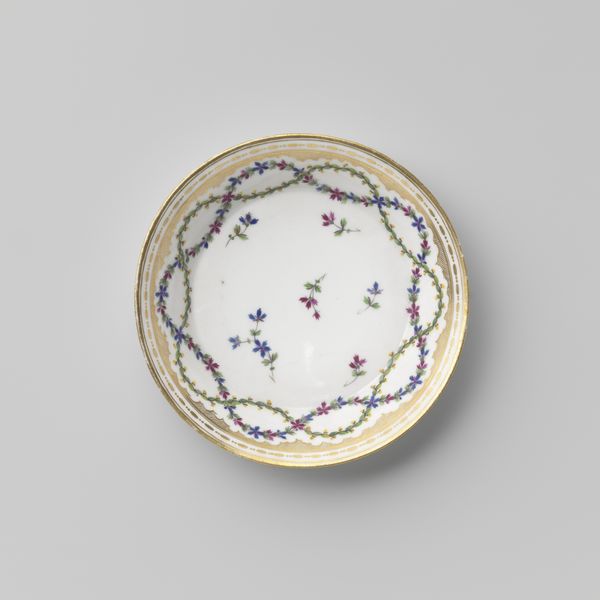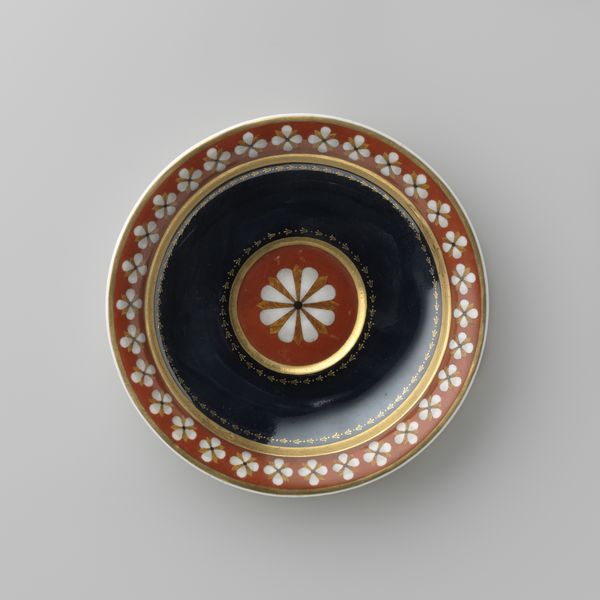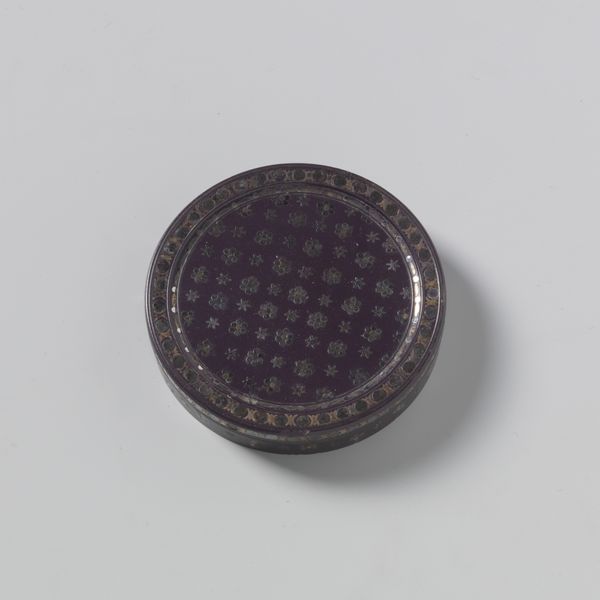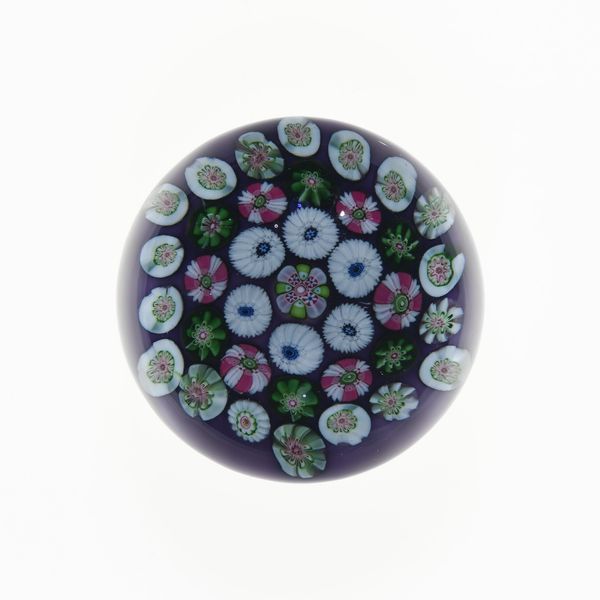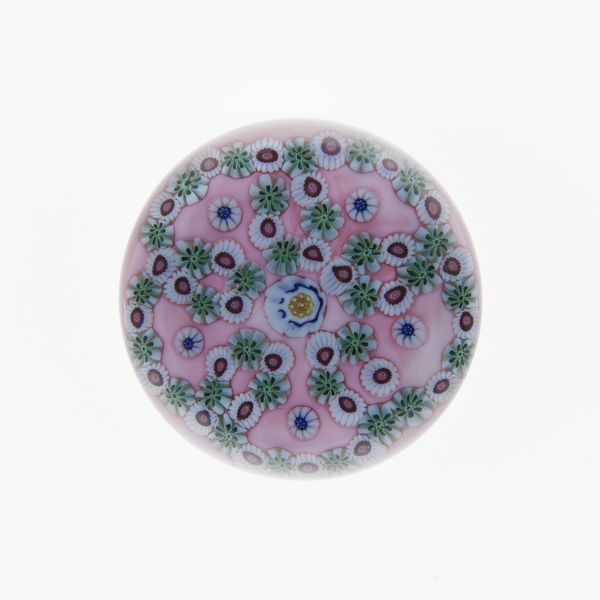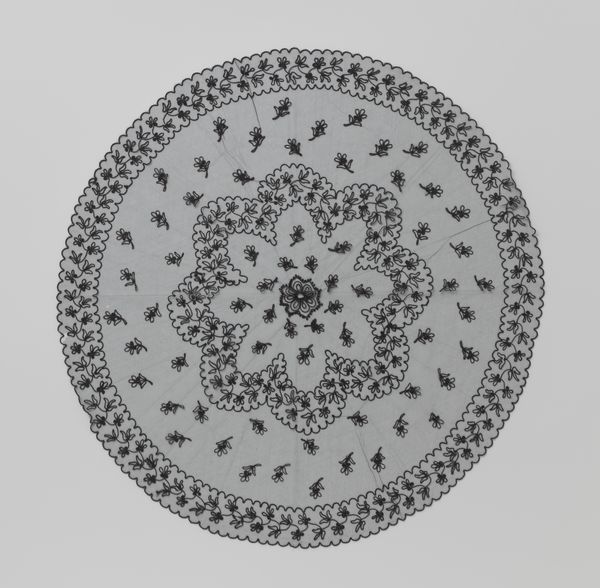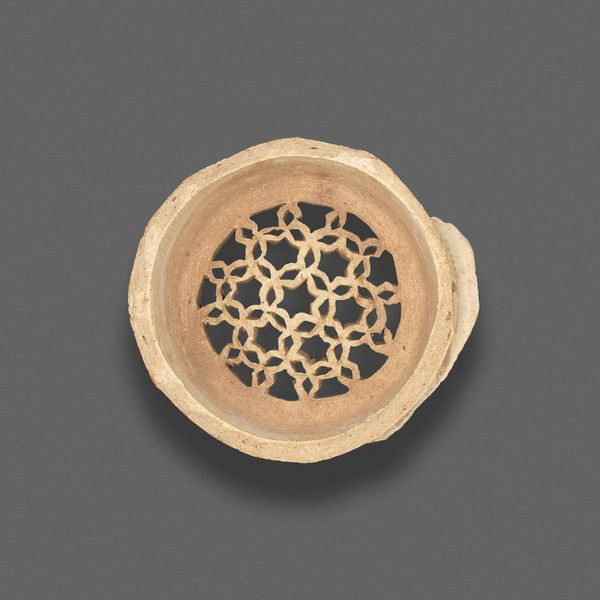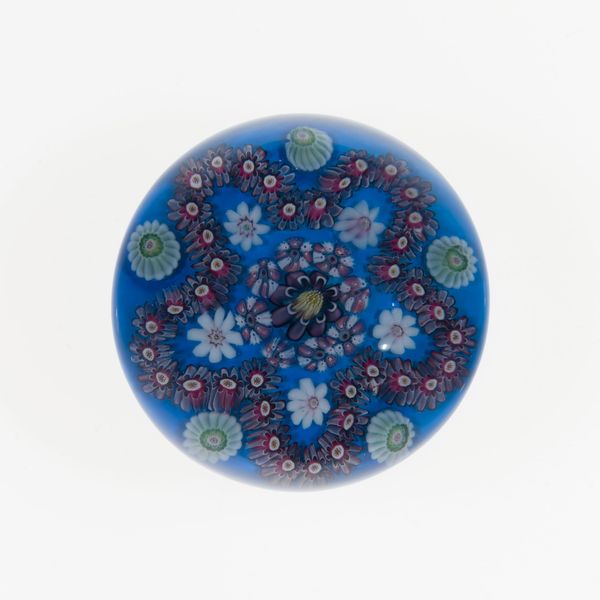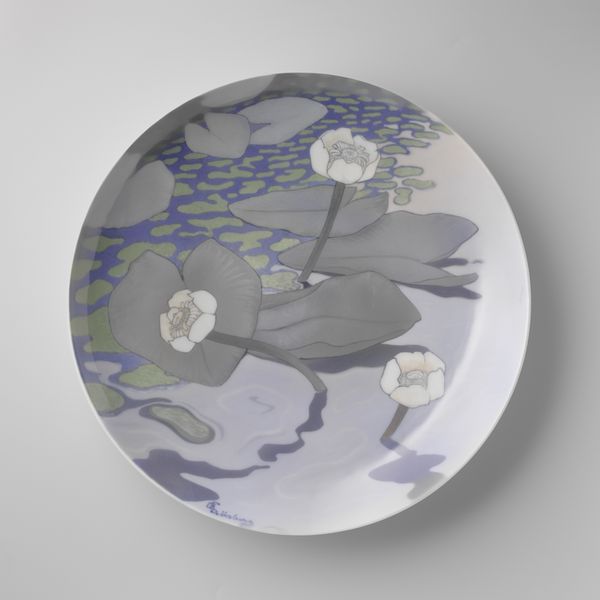
ceramic, earthenware
#
ceramic
#
earthenware
#
decorative-art
Dimensions: diameter 25.0 cm, height 1.6 cm
Copyright: Rijks Museum: Open Domain
Curator: There's something undeniably calming about this earthenware plate. Its black speckled interior reminds me of a night sky, the way the pattern is arranged. What are your initial thoughts? Editor: It definitely has a simple elegance. Though the design appears playful, there is a stark contrast with the dark surface and those minimal, almost randomly placed violet dots that hint at more significant meaning. It has me considering the intersection of folk art and resistance, actually. Curator: Ah, interesting perspective! This is an earthenware plate by Plateelbakkerij De Distel. Titled "Blad, behorende bij waterkan en beker met decor met hanen”, it was created around 1920. Editor: The dark palette and these small, nearly insignificant, floral? stars? - seem intentionally diminutive. Do you suppose that the design's simplicity is an intentional rejection of excess in a time of social unrest? Was this choice radical? Curator: It's easy to assume such an overt symbolic resistance but from an iconographical point of view, earthenware has an intimate link to domestic life, reflecting simple, quotidian scenes. Editor: And that everyday life, elevated! Its functionality is evident in its form; that tells a distinct story. Though humble, it’s clearly intended as part of a set with matching drinking pitcher and cup. This could function as an early-century rejection of bourgeoise life—but I suppose we can’t confirm such context directly, can we? Curator: No, though its repetitive patterning aligns with principles of folk patterns while rejecting, and maybe democratizing fine porcelain? Those colors—the somber black and understated purple, balanced by stark white and sandy tones—may subtly speak to those tumultuous times. Editor: So perhaps its symbolic function isn’t located just within that one moment. The image itself becomes a part of memory: a domestic plate as a tool for reflection. Curator: Exactly, that’s what strikes me! The design embodies a complex dialogue, connecting cultural memory with modern aesthetics. Editor: A connection made palpable with this utilitarian piece, so the resistance is both formal, as we see these austere choices for décor in everyday objects; and social. I wonder where its location has been since 1920… food is often a reflection of broader historical patterns and political struggles too! Curator: Absolutely, this plate now gives voice to our reflection on domestic life and the intersection of folk and modernist aesthetics. Editor: Leaving us contemplating: is there really ever such a thing as "just a plate"?
Comments
No comments
Be the first to comment and join the conversation on the ultimate creative platform.
